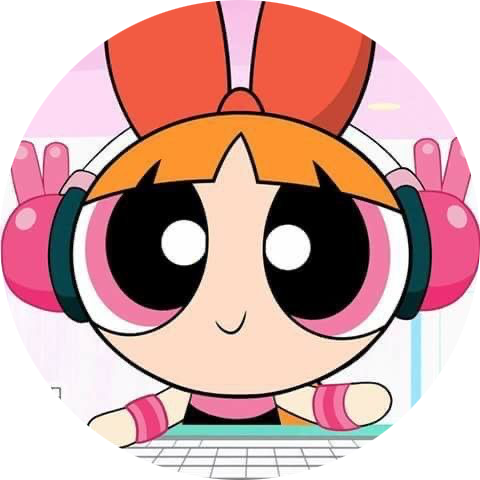Dog Facial Expression Synthesis with Identity Preservation using StarGAN_v2
Image Generation
Object Detection
GAN Fine-tuning
Feature Preservation
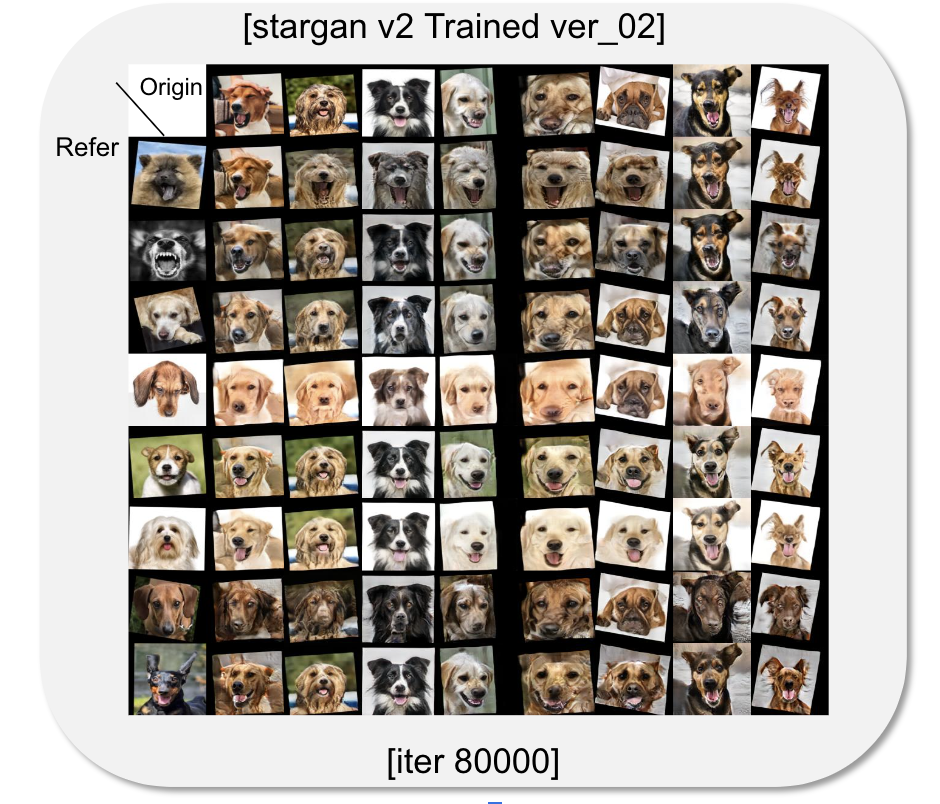
Design
This two-step pipeline detects a dog’s facial expression using object detection and synthesizes expressive, emoji-like images using StarGAN v2.
The goal was to convert pet photos into four emotions — anger, happiness, sadness, and yawning — while preserving their identity.
Data
- Dataset: ~5,000 dog images collected via emotion-related keyword search
- Annotation: 400 manually labeled images per emotion, filtered to exclude duplicates
- Preprocessing: Cropped to frontal dog faces with a minimum resolution of 100×100 pixels
Main Model / Technique
Object Detection
We used EfficientDet for lightweight and accurate detection of dog faces.
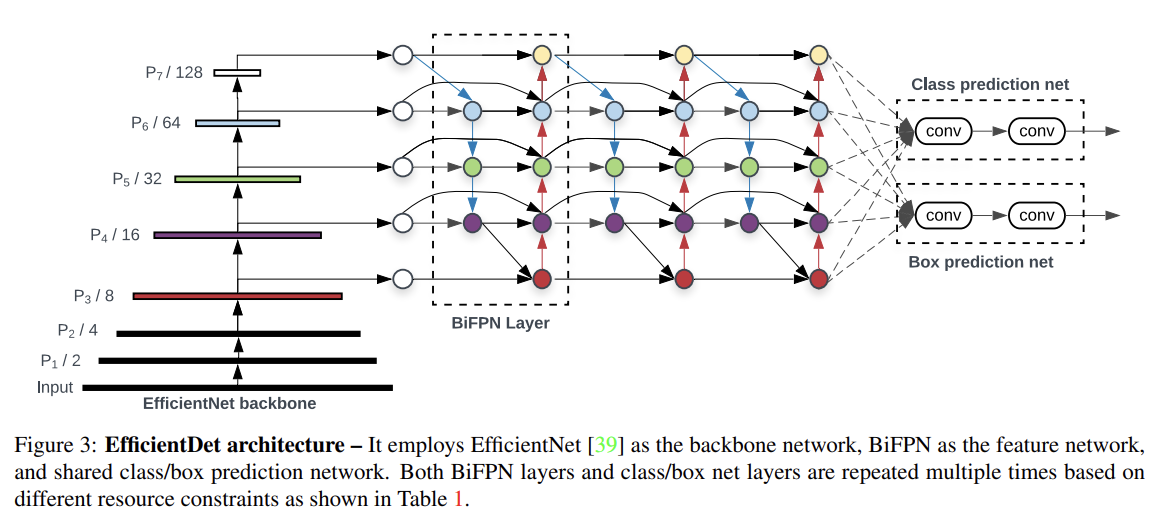
Image Generation
We applied StarGAN_v2 to translate detected dog faces into the target emotion domains.
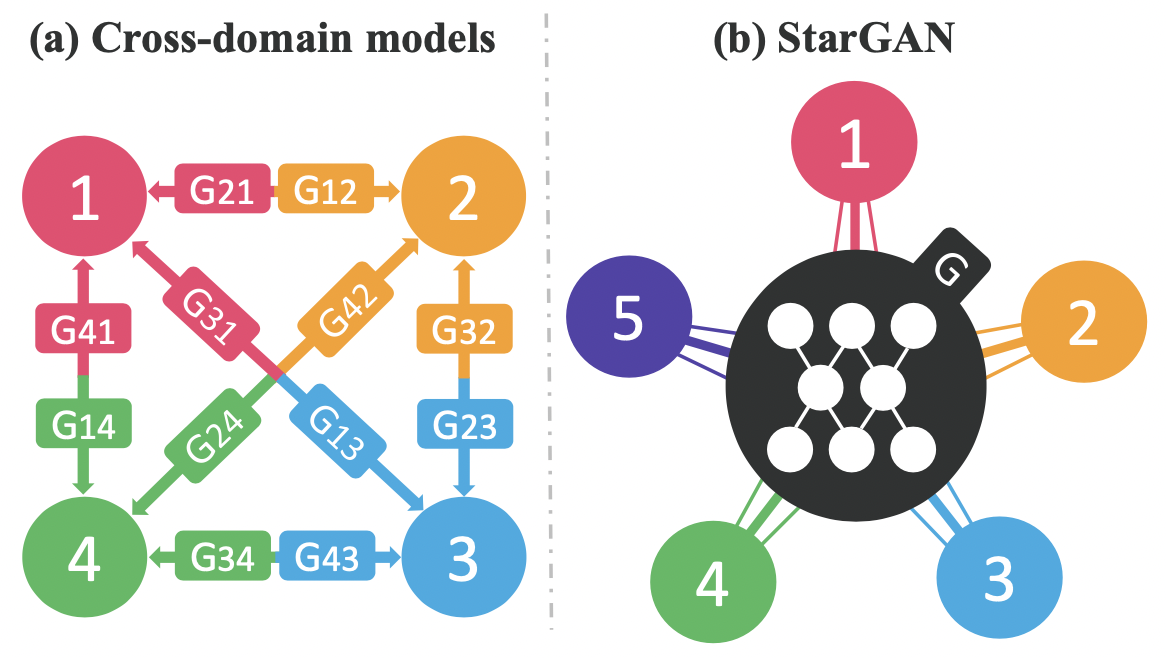
Consideration
While StarGAN v2 successfully generated diverse expressions, it introduced unwanted changes to fur color and breed appearance due to entangled domain features.
To address this, we integrated Histogram Loss inspired by HistoGAN, which helped decouple identity from expression.
- Before (color drift):
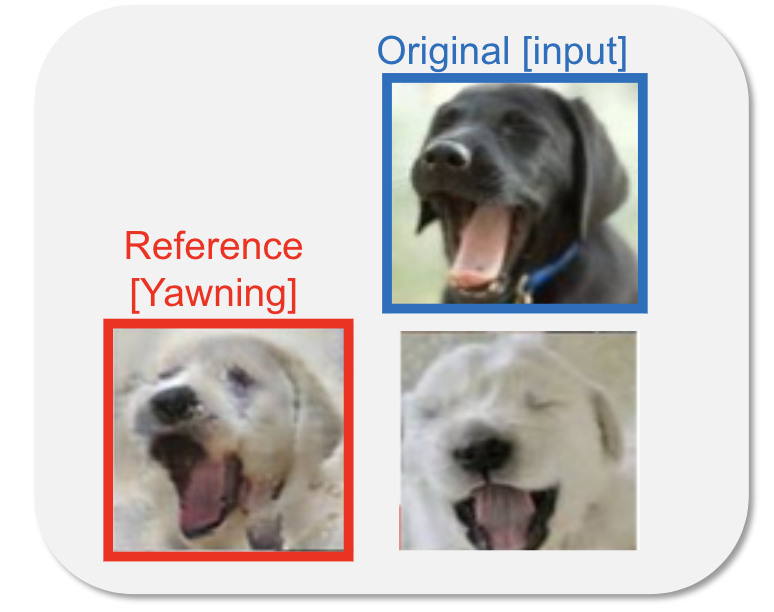
- After Histogram Loss (color preserved):
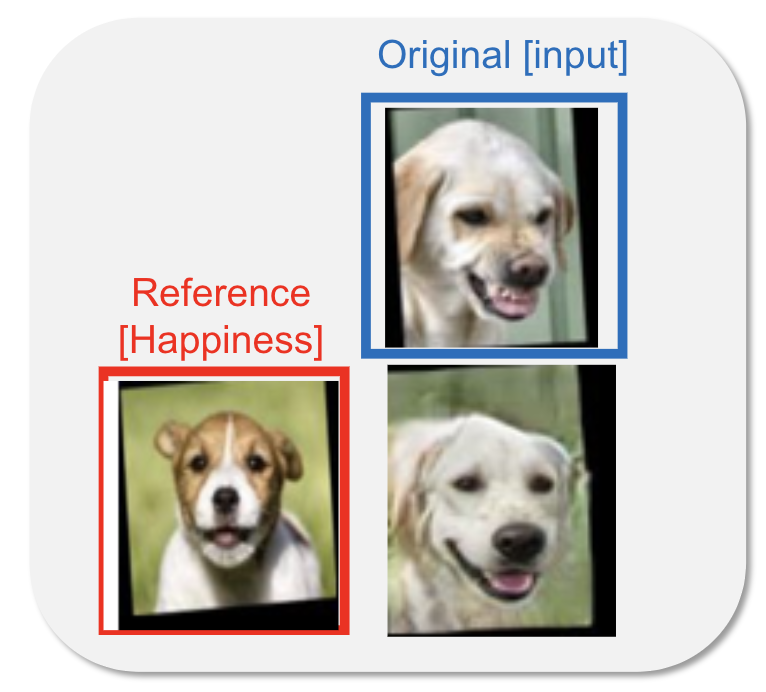
This fine-tuning preserved fur color and breed, which was especially important for user personalization.
This challenge highlighted a common issue in image-to-image translation:
the entanglement between domain-specific attributes (emotion) and instance-level features (identity).
Result
After integrating Histogram Loss, we observed a clear improvement — the dog’s color remained consistent while only the facial expression changed.
Previously, results often altered the fur tone (e.g. turning a white dog brown), which broke the sense of identity.
This update led to more realistic and personalized outputs, enabling pet owners to create emoji-style versions of their actual pets.
Future Ideas
- Quantitatively evaluate outputs using emotion classification models or user surveys
- Scale up annotation using auto-labeling tools such as CVAT
- Fine-tune on a wider variety of breeds and emotional cues
- Explore integration into a mobile or web-based personalization tool
